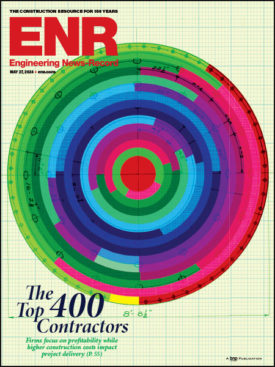
Companies
Sponsored Content
Sponsored Content is a special paid section where industry companies provide high quality, objective, non-commercial content around topics of interest to the ENR audience. All Sponsored Content is supplied by the advertising company and any opinions expressed in this article are those of the author and not necessarily reflect the views of ENR or its parent company, BNP Media. Interested in participating in our Sponsored Content section? Contact your local rep!
closeSubscribe to ENR UNLIMITED for Full Access Today!
ENR Critical Path Podcast
More PodcastsProducts
More ProductsEvents
More Events-
30Jul
-
20Aug
-
16Sep
ENR's NY/NJ Infrastructure Forum
New York, NY



























